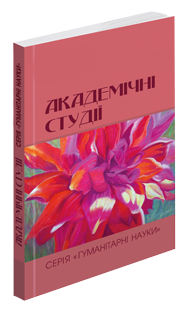Abstract
The proposed study is devoted to the peculiarities of translating emotionally colored expressions from Ukrainian into German. Its relevance is dictated by the need to preserve our original emotionality and expression in the foreign language world. Emotions convey the speaker’s attitude to a certain subject and phenomenon, are identified with expression, national thinking and worldview, so it is quite difficult to translate them. The transition of emotional and evaluative vocabulary from one language to another has always been in the field of interest of linguists, but this topic is still open to interpretation. In the course of our work, we have clarified the essence of the concept of emotive vocabulary and the criteria for its division into separate lexical groups. After analyzing the specifics of transferring emotionally marked words from a native speaker to a recipient, we found that the quality of translation depends on the approach and abilities of the translator. We have identified effective ways to retranslate the studied vocabulary from Ukrainian into German by selecting a full equivalent or replacing certain parts of the sentence. Examples of the translation of emotive means at different linguistic levels (phonetic, morphological, lexical and syntactic) are analyzed, taking into account the national and cultural phenomenon of the Ukrainian and German languages. Particular attention is paid to the reception of established expressions and phraseological units. It is found that the reflection of emotions in language is a significant problem for translation, because it is transmitted in the text in implicit forms: hints, allegory, ambiguity, which are often completely unacceptable in another language. Also, texts for translation may contain symbolism that is sometimes difficult to understand. This is especially true for voluminous metaphors and phrases that have no equivalents in the recipient language. An important factor that complicates translation is the lack of a universal way to adequately convey the emotional load of the original sentences and texts.
References
Кияк Т. Р., Науменко А. М., Огуй О. Д. Перекладознавство (німецько– український напрям). Київ : Київський університет, 2008. 543 с.
Кияк Т. Р., Огуй О. Д., Науменко А. М. Теорія та практика перекладу (німецька мова) : підручник. Вінниця : Нова книга, 2006. 592 с.
Психологічний словник / за ред. В. І. Войтка. Київ : Вища школа, 1982. 214 с.
Сокол Г. Р. Особливості перекладу емотивної лексики на прикладі твору Аліс Пантермюллер та Даніели Коль «Лотта та її катастрофи. Заклинателька змій». Науковий журнал «Вчені записки ТНУ імені В. І. Вернадського. Серія : Філологія. Журналістика». Київ : Видавничий дім «Гельветика», 2022. Том 33 (72). № 6. Том 1. С. 259–265.
Стадній, А. С. (2010). Психолінгвістичний аспект емоційнооцінної лексики. Вісник Дніпропетровського університету. Серія : Мовознавство. 2010. Т. 18. Вип. 16. С. 321–325.
Чайковська Є. Ю. Поняття «емотивність» та «експресивність» у мові науки. Лінгвістика ХХІ століття : нові дослідження і перспективи. Київ, 2010. С. 279–287.
Шахновська І. І., Кондратьєва О. В. Відтворення англійської емоційно-маркованої лексики українською мовою (на матеріалі українських перекладів англомовної драми). Фаховий та художній переклад : теорія, методологія, практика. Київ : Аграр Медіа Груп, 2015. С. 330–334.

